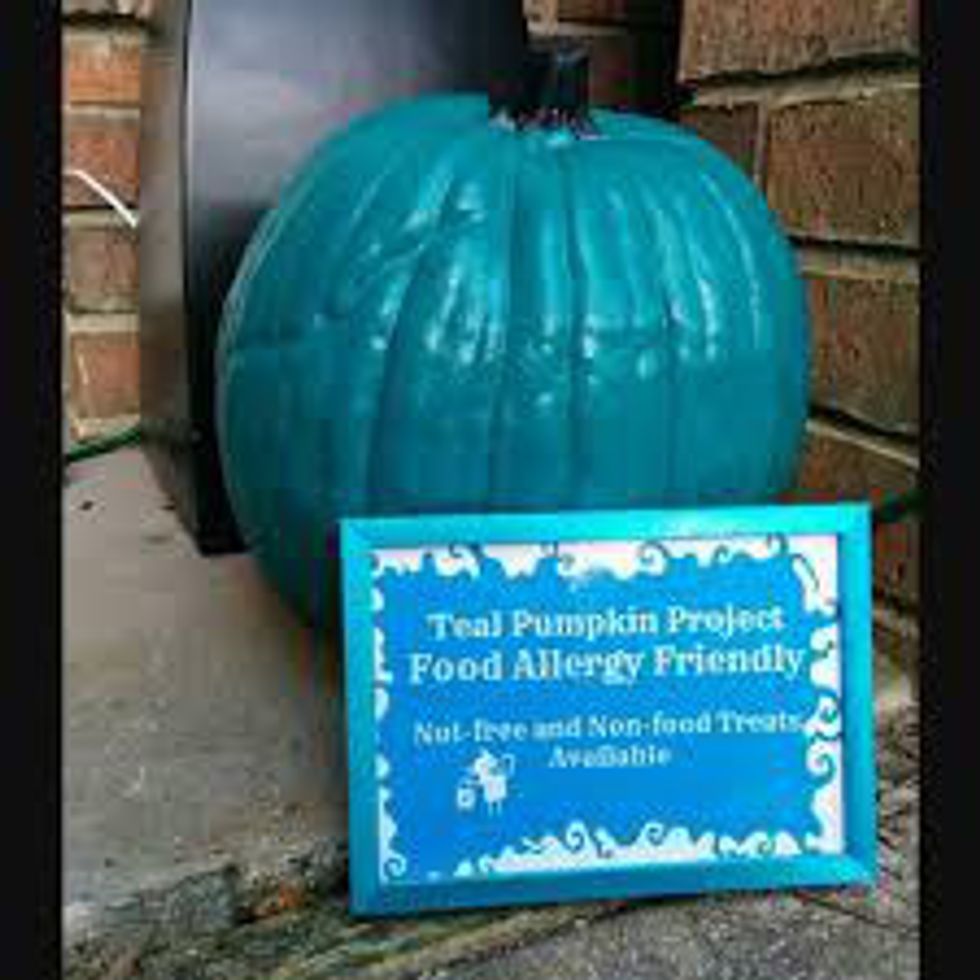No, it’s not from a scary movie. It’s something most of us probably don’t think about every year. It’s candy.
With it now officially feeling like fall and having Halloween right around the corner, I think it's a good time to talk about something that has a big impact on my family year round, and especially on holidays like Halloween. I’m going to be talking about food allergies, and yes, you read that right.
Yes, I may sound overdramatic at times, but that's only because I know just how important it is to know exactly what is in the Halloween candy that you are giving out. My little brother, Tyler, has a deadly food allergy, and we have to be cautious of it every day. But holidays like Halloween are the worst when he gets all this candy, and we have to take half of it away because it contains a very simple ingredient that could actually kill him. We always have to be careful about what foods we buy, what foods we give him, where we go to dinner, and even what foods others are eating around him. We always have to have his EpiPen® on us when we take him out anywhere, even if we’re just running out to get something quick. We’re so thankful that we’ve never actually had to use it, but the fear is still there, especially around Halloween, when he’s getting candy and we might not know what’s in it.
So when I heard about The Teal Pumpkin Project™ that was launched in 2014 by Food Allergy Research & Education (FARE), I got super excited—not only for my brother, but for everyone who can't eat half the candy they receive on Halloween. According to FARE's website, only eight foods account for about 90 percent of all food-allergic reactions here in the United States. Those 8 foods are peanuts, tree nuts, milk, eggs, wheat, soy, fish, and shellfish. I think it's pretty safe to assume that nobody is going to try to hand out fish or shellfish on Halloween, so I really want to focus on two of these allergies: peanuts and tree nuts, two of the most common allergies in the country. My little brother has a deadly allergy to peanuts, which are one of the main ingredients in four of the top 10 candy bars sold in the United States, and are used as a minor ingredient in many, many other kinds of candy.
The Teal Pumpkin Project™ was started to "encourage people to raise awareness of food allergies and promote inclusion of all trick-or-treaters throughout the Halloween season." The way it works is, families paint a pumpkin teal and put it on display with all their other lovely Fall and Halloween decorations, and that way, parents and children know that the house is offering some non-food trick-or-treat goodies, or that they have a specific allergy they are avoiding. On the website for The Teal Pumpkin Project™ there are so many ideas for non-food items to hand out, like glow-in-the-dark bracelets, stickers, and more!
The Teal Pumpkin Project™ isn't trying to take the candy out of Halloween, they're just trying to make trick-or-treating as safe and fun as possible for kids with food allergies. Will you join the movement?









 StableDiffusion
StableDiffusion Photo by
Photo by  Photo by
Photo by 
 full parking
StableDiffusion
full parking
StableDiffusion









